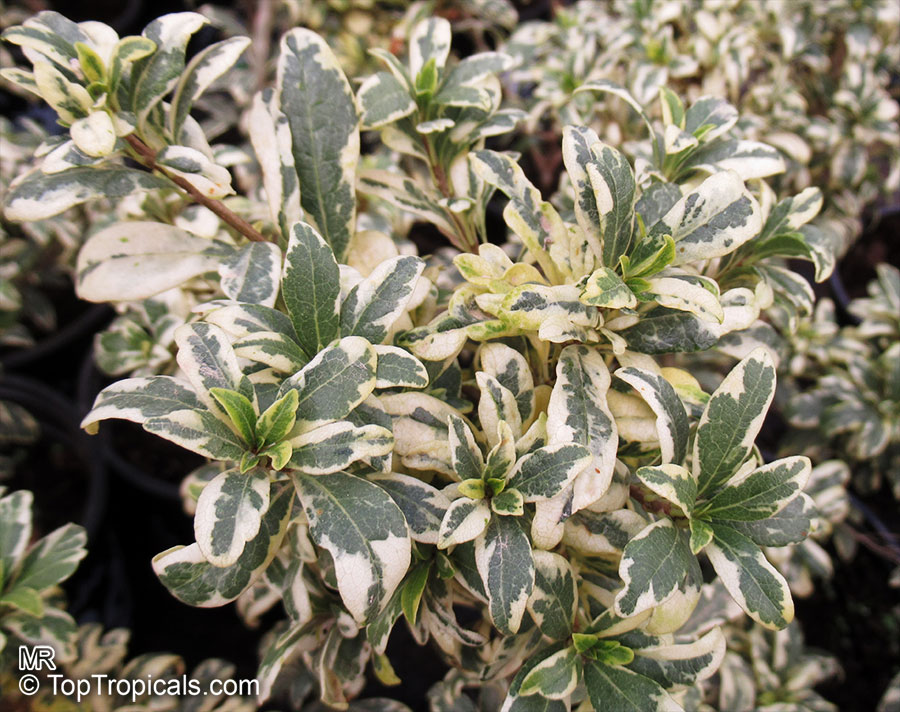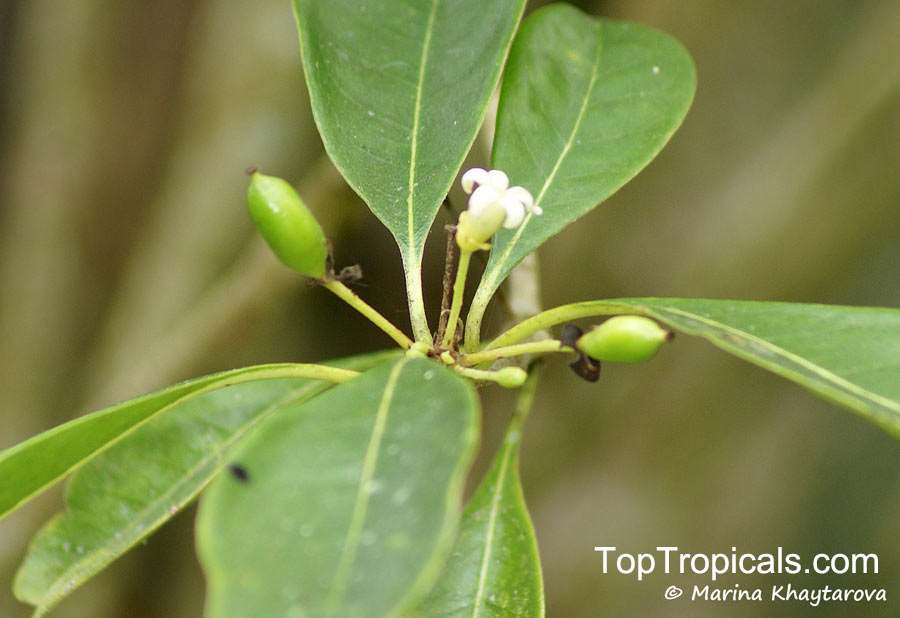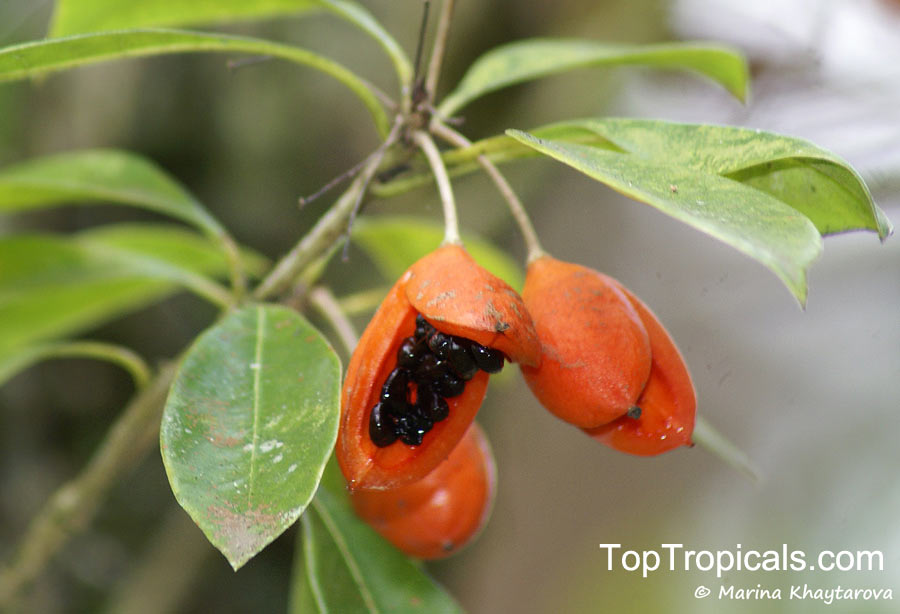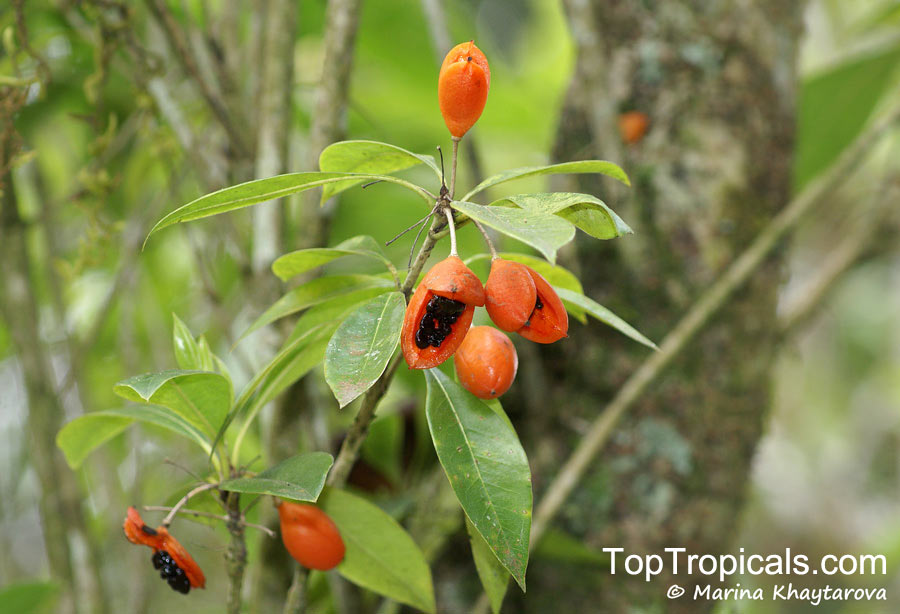Pittosporum sp. (Pittosporum)
Top Tropicals Plant Encyclopedia
Botanical name: Pittosporum sp.
Common name: Pittosporum
Family: Pittosporaceae
Origin: Southeast Asia, Australia








Pittosporums are a popular choice for those looking to add greenery and texture to their landscapes. These large shrubs can grow up to 20 feet under ideal growing conditions, making them perfect for creating hedges, screens, and accenting pathways. Native to Southeast Asia and Australia, the Pittosporum genus is known for its hardiness and versatility in terms of soil and light requirements.
One of the standout features of Pittosporums is their ornamental value. With a profusion of small white or off-white fragrant flowers that bloom in the spring and summer months, these evergreen plants are sure to add a pop of color to any garden. The foliage is also attractive, with a glossy and dark green hue that has a leathery texture. Depending on how they're pruned, Pittosporums can grow into a low-maintenance hedge or a more wild-looking small tree.
Pittosporums are quite drought-tolerant once established, making them a great option for those with busy schedules. They can tolerate full sun to semi-shade and will do best with regular watering. The species can grow in USDA zones 9-11. In colder regions, they can also be grown in containers indoors, as long as they're provided with plenty of light and water.
When growing Pittosporums in a container, keep the soil moist but not soggy. In colder regions, use cold-protection measures like applying a thick layer of mulch in the winter. Be sure to prune the plant in the fall to avoid breakage in heavy snows or ice.
Pittosporums are an excellent choice for adding color and texture to gardens and landscapes. Their hardiness and versatility make them ideal low-maintenance plants that can grow in a variety of climates and soils. With regular care and protection from cold temperatures, the Pittosporum genus will thrive for years to come.
Fun fact: The genus is named after their sticky seeds, from the Greek meaning "pitch-seed".
Similar plants: Pittosporum sp. (Pittosporum)
- Auranticarpa rhombifolia (Diamond Pittosporum )
- Pittosporum angustifolium (Willow Pittosporum)
- Pittosporum crassifolium (Stiffleaf Cheesewood)
- Pittosporum daphniphylloides (Pittosporum)
- Pittosporum heterophyllum (Pittosporum)
- Pittosporum hosmeri (Kona Cheesewood)
- Pittosporum moluccanum (Pittosporum)
- Pittosporum pentandrum (Taiwanese Cheesewood)
- Pittosporum ramiflorum (Pittosporum)
- Pittosporum tenuifolium (Kohuhu)



